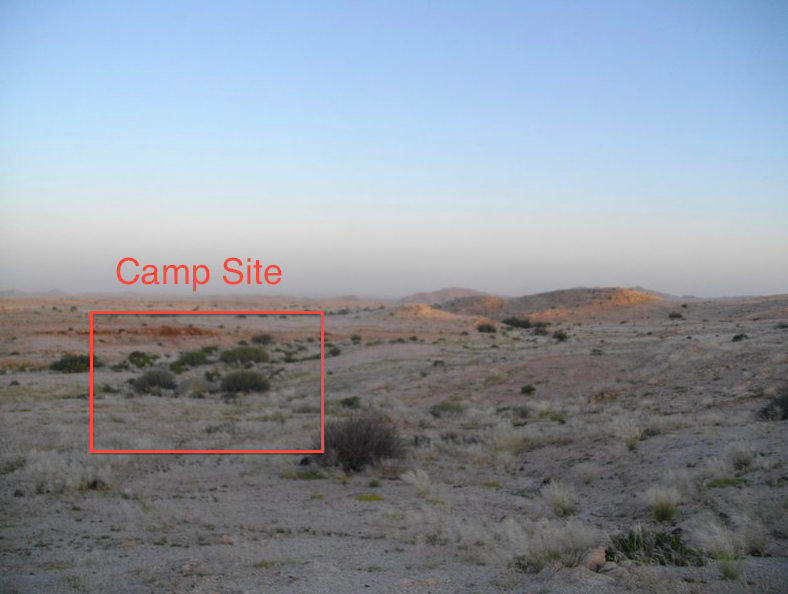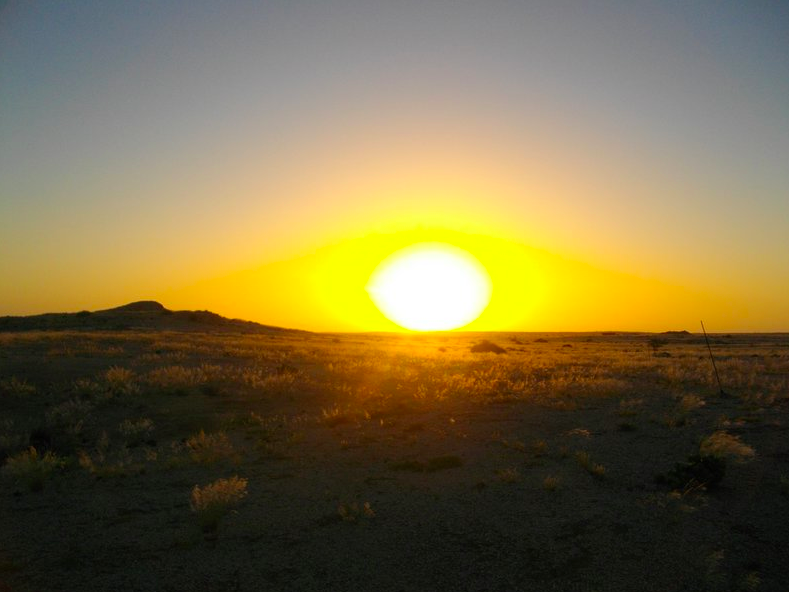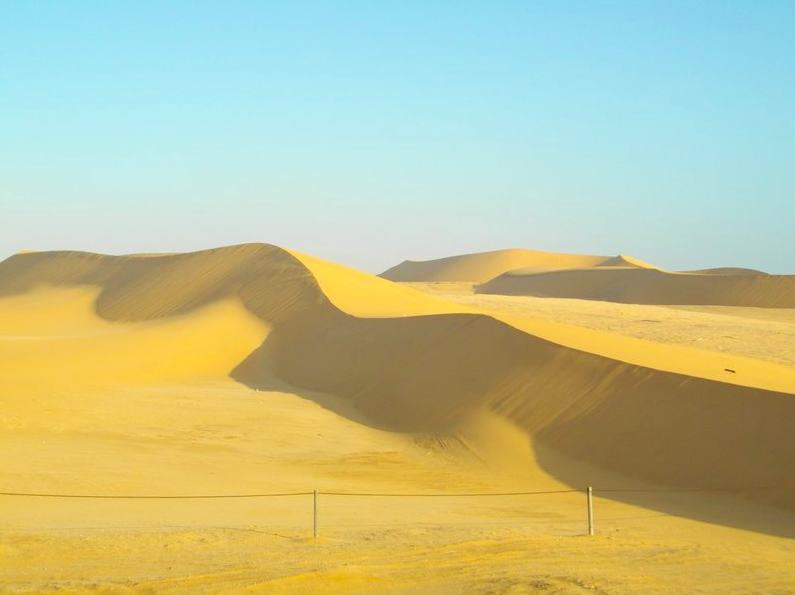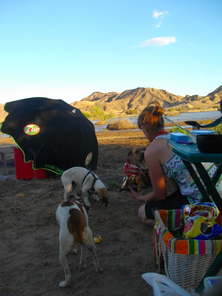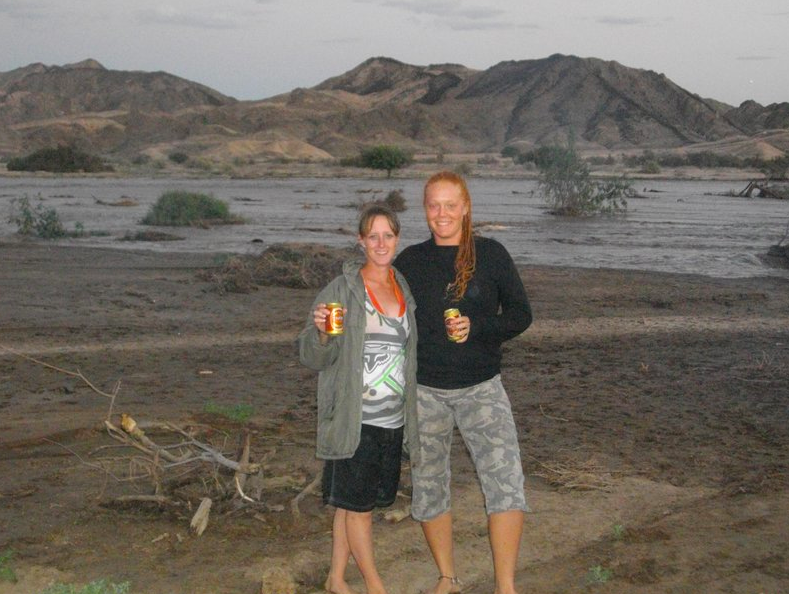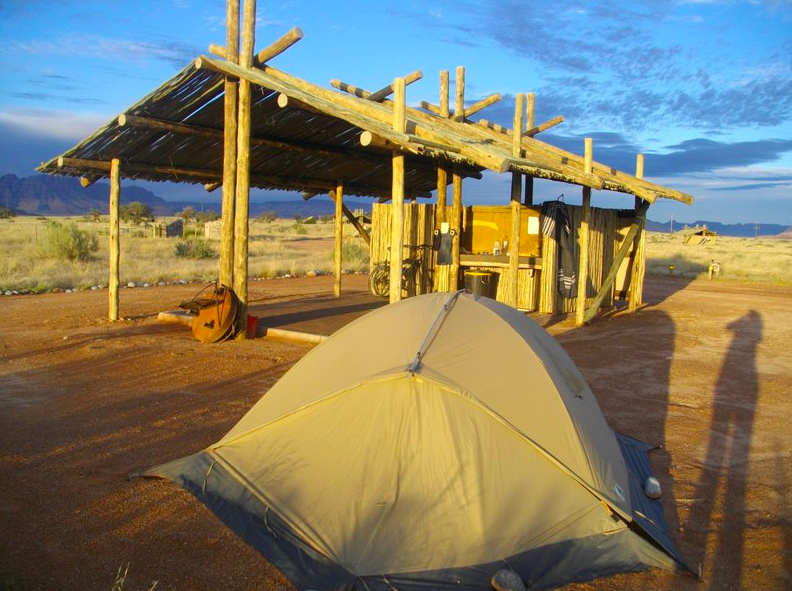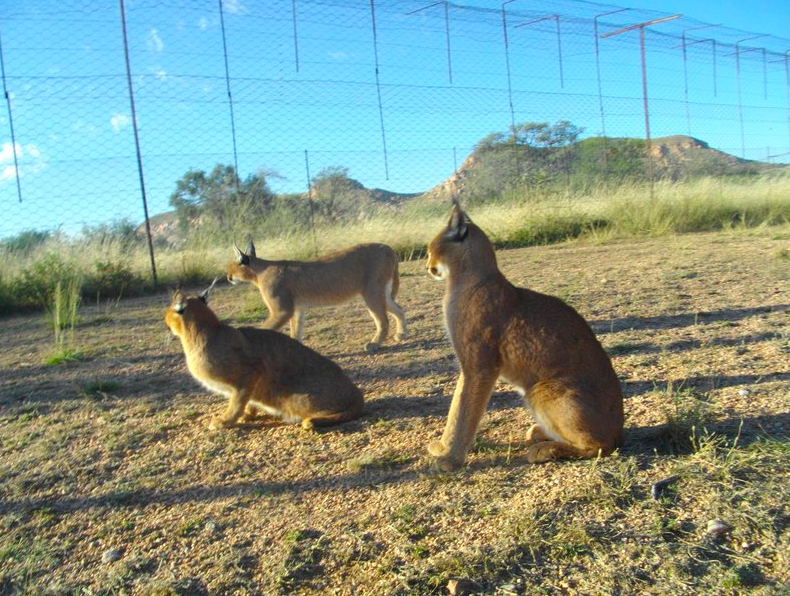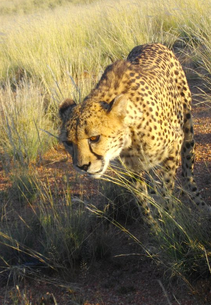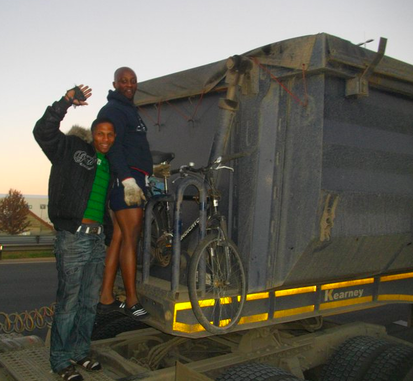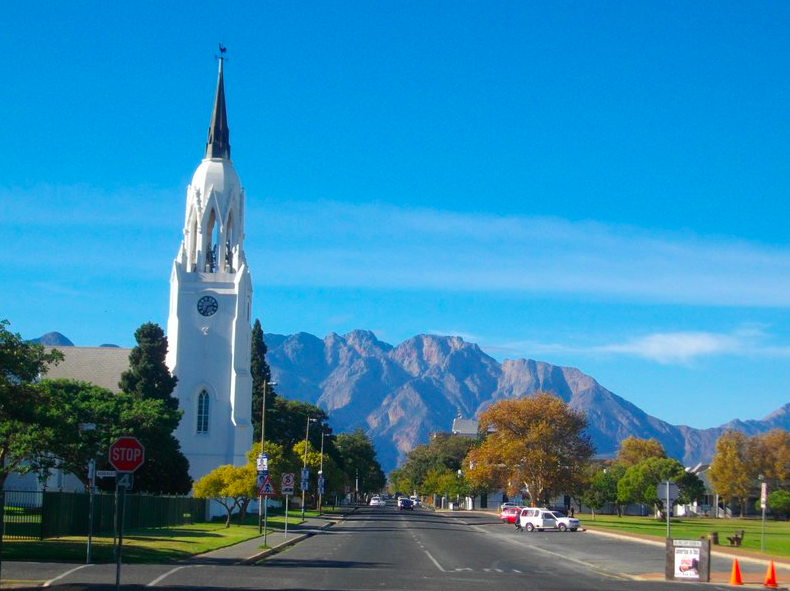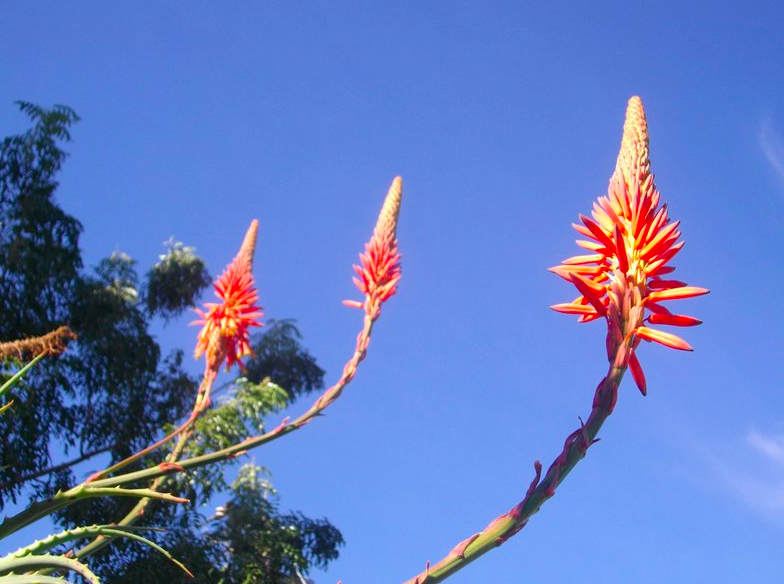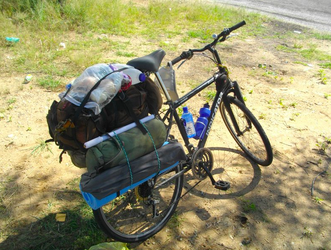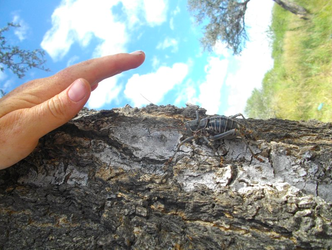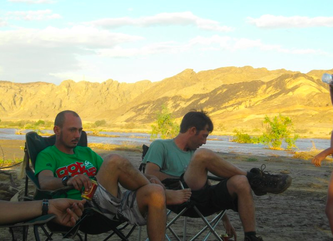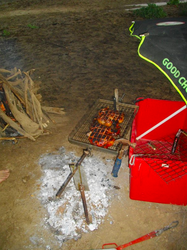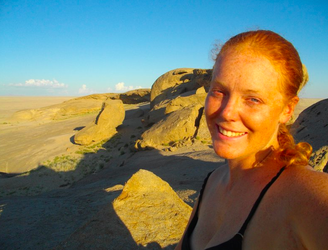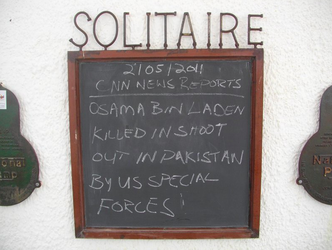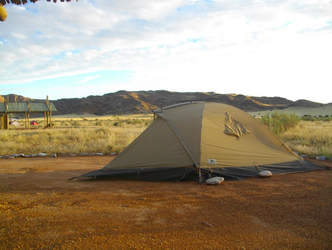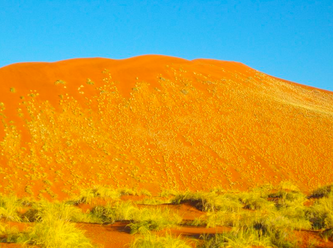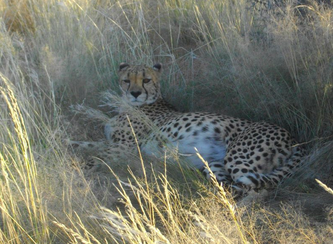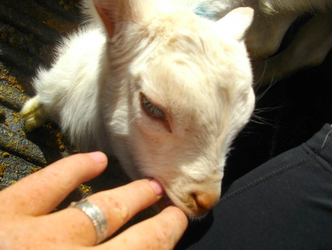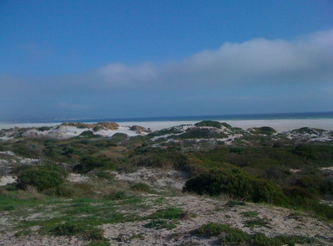Peddling Deserts in Southern Africa
24/05/2012 - Namibia and South Africa
|
Cycling was a most enlightening choice of transport for southern Africa - it is only on a bicycle that you get a true feeling for the incredibly vast expanse of land that makes up the Kalahari, Namib, and South African cape. You ride for hours staring at this vastness, and see a familiar tree or hill, and the thought crosses your mind that you're going in circles or you've made a wrong turn; but there are no turns, it has been one straight road for days. When the shadows start getting long, you know you're still 110 km from the next town, so it's time to find a place to pitch your tent. Looking around, you see the definition of desolate; but it's the beautiful kind: you feel at peace, not lonely. Luck is on your side, there are a few giant rock hills a hundred meters from the road, and as you slip your aching legs off your bike and approach, keeping a cautious eye open for mambas and adders, you see there is a large overhang giving shelter to a sandy patch of ground underneath: perfect. The sun is about set, and climbing to the top of the smooth rock mountain, you watch the changing pinks, purples, reds and oranges dance across the sky, entertaining the few living beings sitting out in the middle of the oldest desert in the world. The sun completes its decent for the night, and after a final burst of fiery red from the horizon you feel the temperature begin to drop. You climb into your tent to cozy up, rest your muscles, and wait for the hyenas and jackals to start their symphony of yipping.
|
|
I had many of those delightful nights during my ride through Botswana and Namibia. But it wasn't all roughing it; despite the relatively huge amount of tourism in the country, there is still plenty of hospitality and people who are happy to help out a solo cyclist. The huge distances in the desert mean it's nearly impossible to carry enough water, but almost every vehicle flagged down stopped and eagerly replenished my 5 litre supply, and often offered a few energy bars or even a picnic lunch as a bonus. Even the tourist resorts were welcoming despite my rather apparent lack of funds. Without even having to ask, the owner of the Sesserim campsite just outside the famous Sossusvlei gates offered me a fully equipped campsite for as long as I wanted it - the pool, electricity and private bathrooms made it the most comfortable camping experience I've ever had. Stopping for water at a small farm a few days later, I was warmly welcomed for coffee and lunch and instructed to make an appearance up the road at Rammstein Lodge. When I arrived I was again warmly welcomed with coffee, first aid (to replace the bandages from a particularly nasty fall a few days prior), and again offered a place to stay for a night. I ended up staying three nights, not only because of their 'pet' cheetahs, leopard and caracol, but also because Frank, Henk, and the owner Antoine were such nice and interesting people it took that long to get my fill of their stories.
|
|
For the first few days in Namibia, heading westbound, this was my routine. I had decided to detour to the west to say hi to the Atlantic Ocean (I had missed it since we parted ways in Cameroon) and also to check out the coastal desert dunes and the famous German towns of Walvis Bay and Swakopmund. A last minute call from a Couchsurfing friend introduced me to Margot and Dirk, a young, energetic and incredibly friendly couple who, along with their friends and pet Staffordshires (of course I got along with people who love Staffies), showed me a great time including a memorable evening braai in the moon-like landscape that is Welwitchia.
|
|
What I found most interesting about Walvis Bay was walking to the edge of town. In most modern urban centers there are no well-defined city limits, just suburbs that thin out into agriculture land, or, in the case of underdeveloped mega-cities like Kinshasa or Lagos, urban sprawl that goes on for kilometer after kilometer. However Walvis must be the city in the world with the most precisely defined boundaries. You walk to the edge of town and it really is an edge: the manicured grassy backyard of the last house looks onto the vast sandy desert. It’s almost like the Germans who settled there a hundred years ago had one of their engineers design the city as an island: walk to the edge and if you keep going you fall into the sea-like expanse of desert. |
|
After a few days with Margot and Dirk it was time to peddle out of the city and take the plunge into the desert-sea. The only alternative to re-riding the same road I had come in on was a smaller secondary road: instead of pavement under my wheels, it would be hundreds of kilometers of dirt, gravel, and sand. But we aren’t talking about your average accelerator-friendly desert road, we are talking about a road with corrugated speed-bumps stretching across its width, perpendicular to the direction of travel. Internet searches later revealed that I am not the first person to follow up on the question that inevitably enters the mind after hours of uncomfortable bouncing over these bumps: “Where the #*$@ do they come from?” – Emmet wrote a nice physicist-pleasing explanation about them on his blog ThoughtWax after experiencing the same thing on the back roads of New Zealand. Clearly nature wants to make it difficult to travel through her most pristine landscapes, and as always, she succeeds: besides a very sore gluteus maximus, the corrugation also cut my daily kilometers in half and instigated a lot more flat tires. The other difference about this road was that there were very few cars – less than ten a day passed in either direction which may sound wonderfully peaceful (and it was) but it also made for a much deeper understanding of just how huge and wide open the desert is, and how vulnerable a solo cyclist is to its whims. Besides tiny one-shop towns every few hundred kilometers, it was just me, the four-legged locals (who thankfully kept their distance, see this video of what happens when they don’t), and the oldest desert in the world.
|
|
The road southeast in Namibia wasn't all roughing it; despite the relatively large amount of tourism in the country, there is still plenty of hospitality and people who are happy to help out a solo cyclist. The huge distances in the desert mean it is nearly impossible to carry enough water, and although there were sections with very few vehicles, they always stopped and eagerly replenished my 5 litre supply, and often offered a few energy bars or even a picnic lunch as a bonus. Even the tourist resorts were welcoming despite my rather apparent lack of funds. Without even having to ask, the owner of the Sossus Oasis Campsite just outside the famous Sossusvlei gates offered me a fully equipped campsite for as long as I wanted it - the pool, electricity and private bathrooms made it the most comfortable camping experience I've ever had. Stopping for water at a small farm a few days later, I was warmly welcomed for coffee, lunch, first aid (to replace the bandages from a particularly nasty fall a few days prior), and instructed to make an appearance a day’s ride away at Hammerstein Lodge. Turns out my friends at the farm called ahead, so upon arrival the next morning the worried lodge personnel said they had gone out looking for me during the night – apparently the professional trackers did not think it was safe to camp in the desert, alone with the hyenas. I ended up staying three nights at the lodge, not only because it is a beautiful place and they have 'pet' cheetahs, leopard and caracol, but also because Frank, Henk, and the owner Antoine are such nice and interesting people that it took that long to get my fill of their stories.
|
|
Unknown to me, leaving Rammstein, hanging on to my bike in the back of a goat-filled pickup, meant an end to my southbound cycling adventure. After a few fun nights Couchsurfing with some awesome Peace Core volunteers in Mariental, I was unexpectedly offered a ride in a truck all the way to Cape Town, which had not been on my planned cycling route and was completely in the wrong direction, but seemed like a worthwhile detour to take. So my new trucking-friend Dawid and I took off across the border for the overnight drive south, and at dawn the next morning the first rays of sun exposed the huge green mountains of the South African cape. |
|
My friend Gordon from Zambia organized a last minute place to stay with his niece, and within a few hours of dawn Kristi and I were speeding past endless vineyards, more mountains, and beaches on the way to her little artist apartment. When I saw my first glances of the Indian Ocean I felt that after 15 months of being on the road, up mountains, across deserts, through jungles, from the most remote villages to luxury farms, to the slums of mega-cities, to beach side villas, I could finally breath a sigh of relief: I'd made it. And that sigh wasn't so much for myself, because I still don't credit myself for making it this far; it was for Africa. For all the preconceived notions that fought to keep me from traveling here, here’s to hoping that the story of a single western woman hitchhiking across the entire continent, never staying in hotels or sticking to "safe" places, yet arriving unscathed, in perfect health, and without any excitingly dangerous stories to tell, will open at least a few people’s eyes.
|
|
I've now hitchhiked across South Africa to Johannesburg, (with wonderfully nice drivers of all colours - despite the horror stories of post-Apartheid racism I’ve been told so many details about), got some practice driving a 50 ton, 18-gear transport truck, and am safe and sound with my Botswana picnic friends Mariska and Garreth. Tomorrow Mom comes, we'll do a whirlwind hitchhiking tour of Southern Africa, then it's time for me to figure out the next stage…
|


